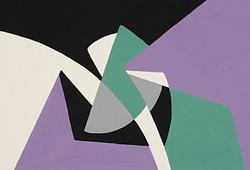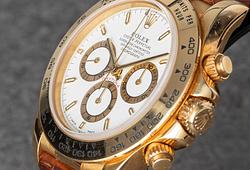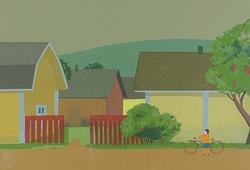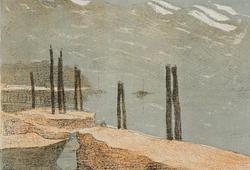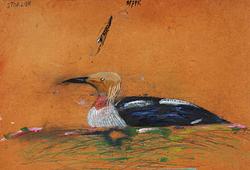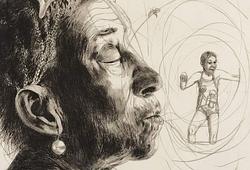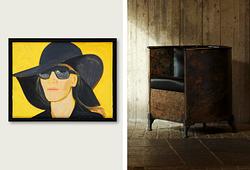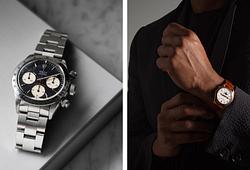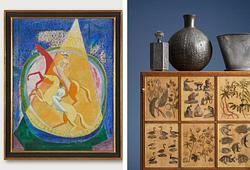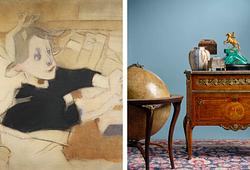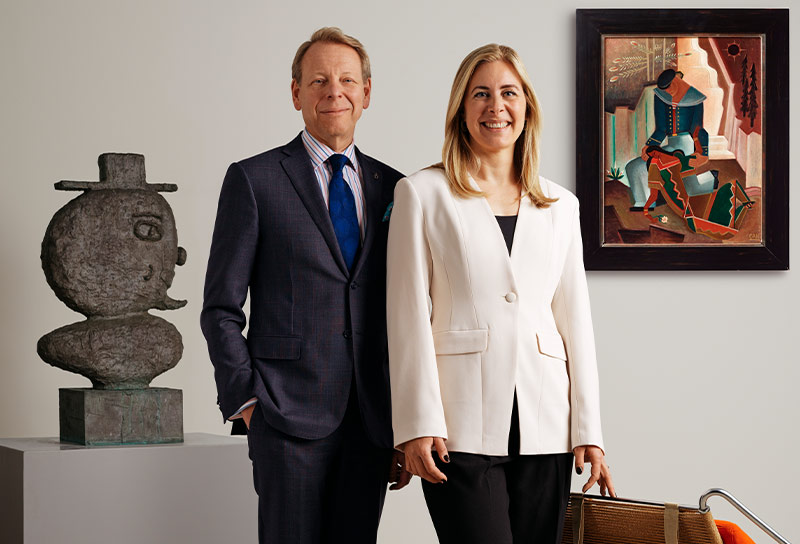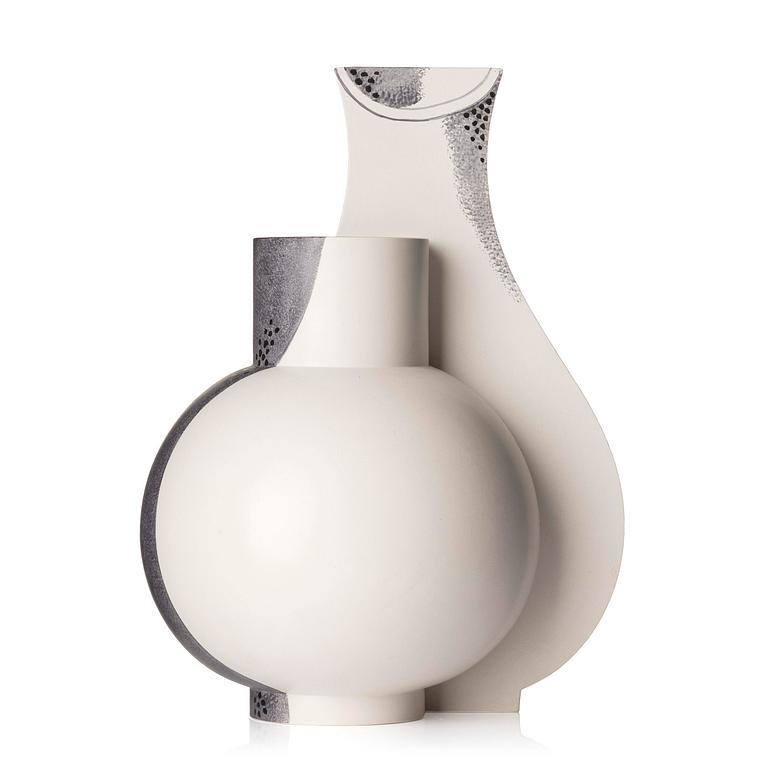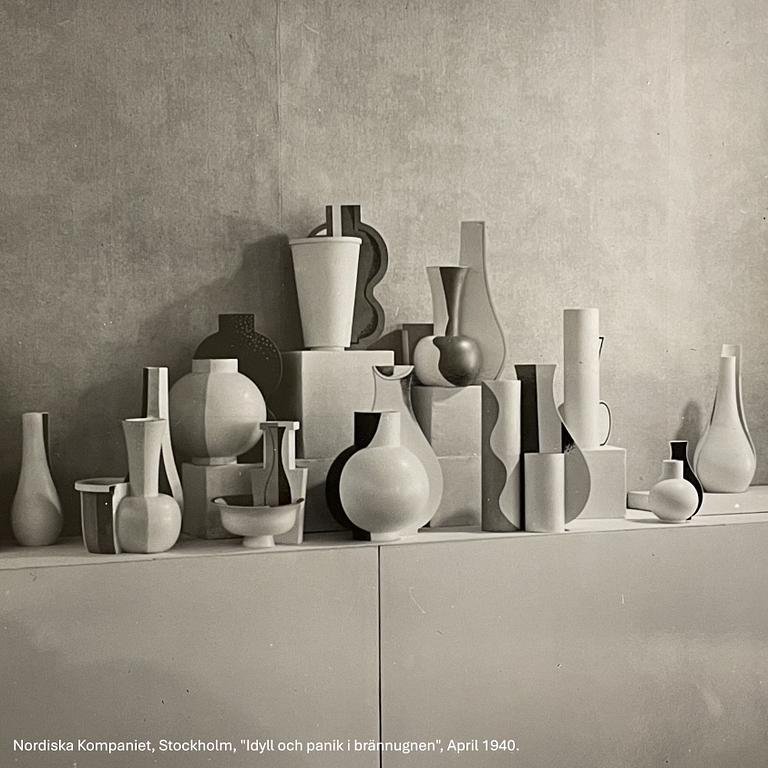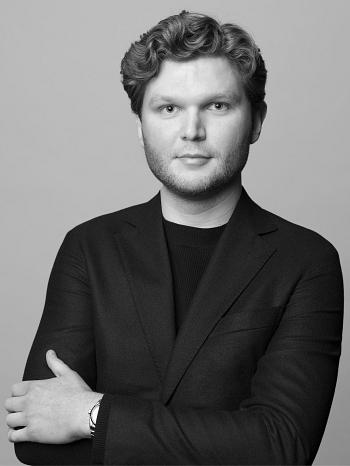Wilhelm Kåge
An important "Surrea" stoneware vase, Gustavsberg, ca 1940.
Carrara-glazed, partially painted in black and grey, stamped GUSTAVSBERG KÅGE. Height 47 cm.
Hairline crack at the rim, a glaze chip.
Provenance
Formerly in the collection of attorney Lars Höglund.
Exhibitions
Nordiska Kompaniet, Stockholm, "Idyll och panik i brännugnen" (Idyll and Chaos in the Kiln), April 1940.
Literature
Ann Marie Herlitz-Gezelius, "Åren som gått: Nordiska Kompaniet", Signum 1992, p. 76, the present lot illustrated in a photograph from the exhibition in 1940.
More information
"The fire is the strict and capricious master of ceramics, who can realise his most secret dreams of beauty but can also thwart his calculations by causing chaos in the kiln. (...) In a series of "Surrea" pieces, the artist has played with form, inspired by surrealist and cubist painting, achieving some entirely new ceramic effects, which are now being exhibited for the first time."
When Nordiska Kompaniet announced Wilhelm Kåge's major exhibition "Idyll och panik i brännugnen" (Idyll and Chaos in the Kiln) in April 1940, they highlighted the groundbreaking "Surrea" series. Kåge made a name for himself as a “Picasso at the potter's wheel” when he cut vessels apart and reassembled them with slight shifts in perspective. The complexity of the forms made production very limited.
Designer
Wilhelm Kåge was a Swedish artist and ceramicist. Kåge is known for his ceramics for the Gustavsberg porcelain factory, where he was the artistic director from 1917 to 1949. Kåge studied from 1910 under Carl Wilhelmson at the Valand Academy of Art in Gothenburg and later under Johan Rohde in Copenhagen, where he became acquainted with Gösta Adrian-Nilsson (GAN) and grew closer to modern art. He studied graphic art in Munich and began his artistic career by designing posters for theatres and exhibitions, among other things. His connection with Gustavsberg was facilitated through the Swedish Society of Crafts and Design, as Gustavsberg needed new products for the Home Exhibition at Liljevalchs in 1917. He went on to design around thirty different dinnerware sets, as well as art pottery, colourful faience, stoneware, and various series of art pottery such as Carrara, Surrea, and Våga. In 1942, Kåge, together with Stig Lindberg, established the Gustavsberg Studio, which became a kind of aesthetic laboratory for art pottery.
At the Stockholm Exhibition in 1930, Kåge presented Gustavsberg's future sales success "Argenta," a series of art pottery primarily glazed in green but also in red, blue, brown, and celadon green, and decorated with various silver designs based on Kåge's sketches. Argenta became very popular and was produced well into the 1970s. The powerful stonewares "Farsta" were also presented at the Stockholm Exhibition and they became the ones closest to Kåge's heart and with which he continued to experiment throughout his life. The pieces improved over the years, and the most impressive and many of the most sought-after items were created by Kåge during the 1950s.




